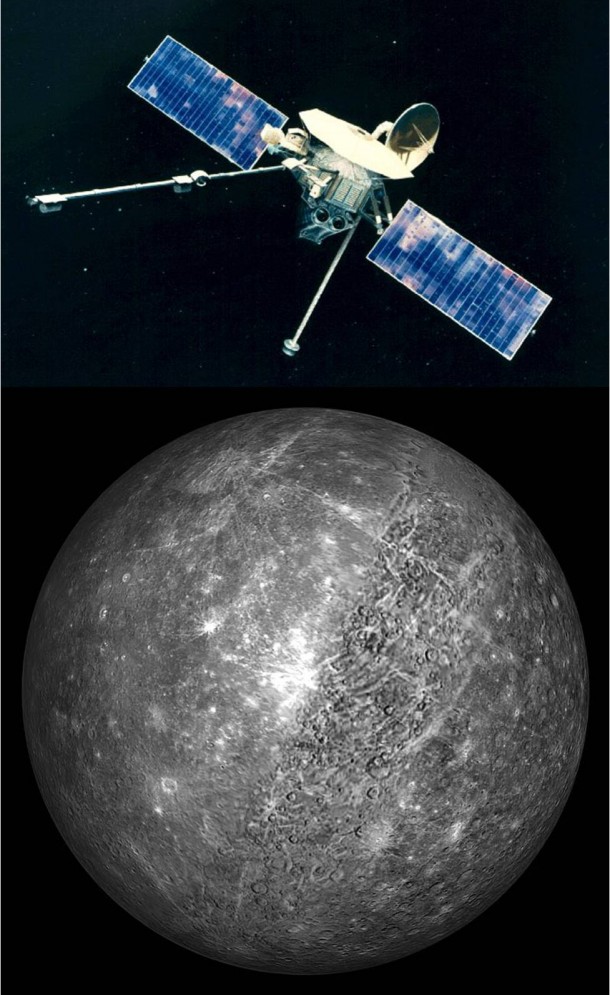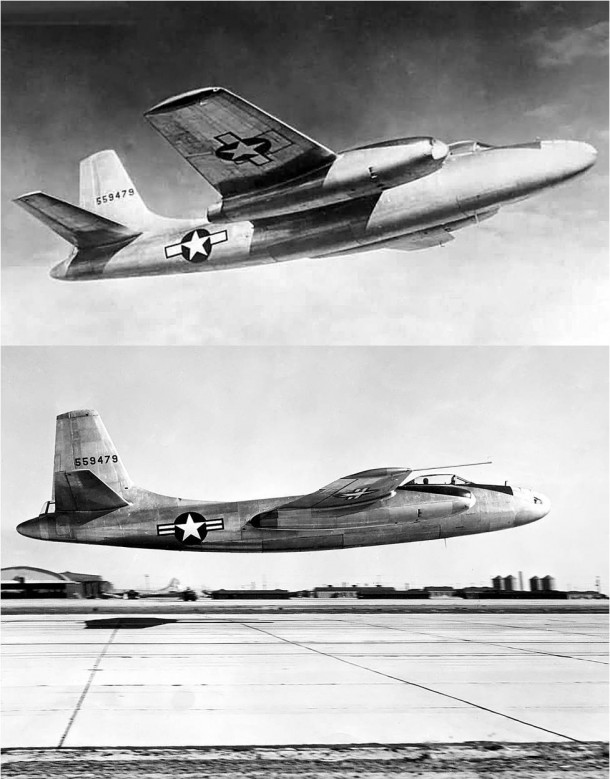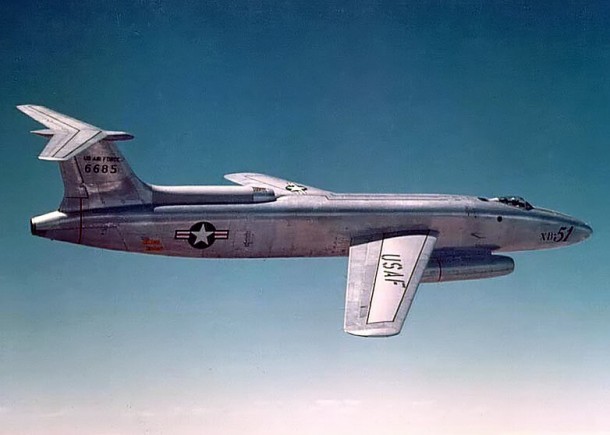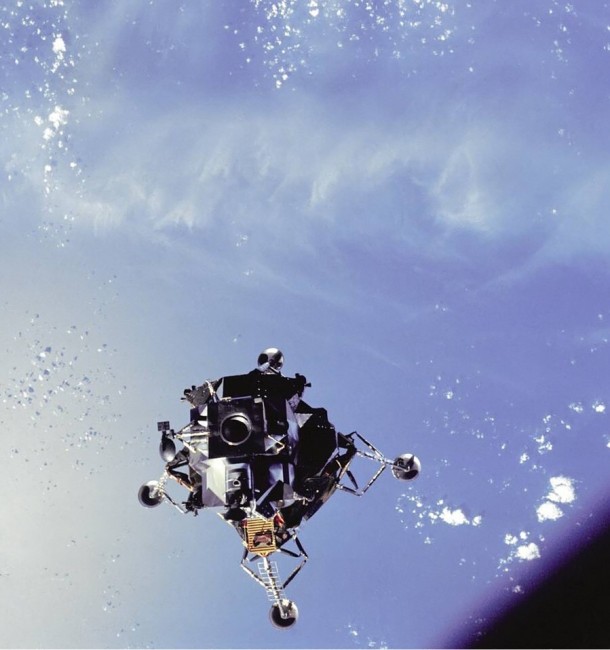
Forty-years ago this week, NASA’s Mariner 10 interplanetary probe conducted the first-ever flyby of the planet Mercury. Among other discoveries, Mariner 10 found that Mercury’s surface is heavily cratered much like the Moon.
Mercury is the smallest planet in the Solar System, having a diameter of slightly over 3,000 miles. Mercury is also the closest planet to the Sun, traveling in an elliptical orbit with an aphelion and perihelion of 43.3 and 28.6 million miles, respectively.
Its close proximity to the Sun explains why Mercury’s sunward surface temperature rise as high as 840 F. On the other hand, temperatures on the dark side of the planet can be as low as -275 F. This is the greatest known temperature differential for any planet in the Solar System.
Mercury is a fast mover by planetary standards. With an orbital velocity of about 112,000 mph, the tiny orb completes one orbit of the Sun in just 88 Earth-days.
NASA’s Mariner 10 interplanetary probe was the first spacecraft to conduct a flyby of the planet Mercury. This historic event occurred on Friday, 29 March 1974. The point of closest approach, only 437 miles above the Mercurian surface, took place at 20:47 UTC.
Mariner 10 found Mercury’s surface to be heavily pockmarked with impact craters. The probe also discovered that Mercury has a tenuous atmosphere composed mostly of helium, a very weak magnetic field, and a iron-rich core.
Mariner 10 went on to conduct flyby encounters with Mercury in September 1974 and March 1975. The third encounter brought the spacecraft within just 203 miles of the planet’s surface. More than 2,800 photographs of Mercury were taken by Mariner 10’s twin cameras during the historic trio of encounters.
As a footnote, Mariner 10 also conducted a flyby of the planet Venus in February 1974. The Mariner 10 mission was immensely successful and the last of the Mariner spacecraft series. Having long ago run out of attitude control system propellants and having its transmitter turned-off, Mariner 10 continues to silently orbit the Sun.

Sixty-seven years ago this week, the USAF/North American XB-45 Tornado bomber made its inaugural test flight at Muroc Army Air Field, California. The type would go on to become the United States first operational turbojet-powered bomber.
The XB-45 measured 74 feet in length, had a wingspan of 89.5 feet and a GTOW of 82,000 lbs. Power was provided by a quartet of Allison J35-A-7 turbojets producing a rather paltry 16,000 lbs of sea level thrust. With a maximum speed at sea level of roughly 500 mph, the service ceiling of the XB-45 was 37,600 feet.
A trio of XB-45 prototype aircraft were manufactured for the Air Force by North American. Serial numbers 45-59479, 45-59480, and 45-59481 were assigned to the three ships. Air crew consisted of two pilots who sat in tandem. The XB-45 flight test program included slightly more than 130 flights.
The first flight of the XB-45, Ship No. 1 (S/N 45-59479) took place on Monday, 17 March 1947 at Muroc Army Air Field, California. North American test pilot George W. Krebs was in the cockpit of the prototype bomber. The one-hour test hop was restricted to low speeds because the landing gear doors could not be fully closed.
Production versions of the Tornado included the B-45A, B-45C, and RB-45C. These aircraft were powered by General Electric J-47 turbojets and represented a great improvement relative to the XB-45 in terms of performance, operability, and reliability. Aircrew for the production Tornado variants included a pilot, co-pilot, bombardier-navigator, and tail gunner.
The Royal Air Force (RAF) used the RB-45C to fly clandestine recon missions over the Soviet Union between 1952 and 1954. Known as Operation Ju-jitsu, RB-45C aircrews gathered electronic and photographic intelligence information critical to the Free World’s defense posture. These high-risk RB-54C missions ultimately led to development of more capable recon aircraft; the Lockheed U-2 and SR-71.
The B-45 and RB-45 Tornado served in the Strategic Air Command (SAC) from 1950 through 1959. The B-45A holds the distinction of being USAF’s first operational jet-powered bomber as well as the first multi-jet bomber to be air-refueled. It was also the first jet bomber to carry and drop a nuclear weapon.

Fifty-eight years ago this month, the lone remaining USAF/Martin XB-51 light attack bomber prototype crashed during take-off from El Paso International Airport in Texas. The cause of the mishap was attributed to premature rotation of the aircraft leading to an unrecoverable stall.
A product of the post-WWII 1940’s, the Martin XB-51 was envisioned as a jet-powered replacement for the piston-driven Douglas A-26 Invader. The swept-wing XB-51 utilized a unique propulsion system which consisted of a trio of General Electric J47 turbojets. Demonstrated top speed was 560 knots at sea level.
The XB-51 was a good-sized airplane. With a length of 85 feet and a wing span of 53 feet, the XB-51 had a nominal take-off weight of around 56,000 lbs. The wings were swept 35 degrees aft and incorporated 6 degrees of anhedral. The latter feature to counter the large dihedral effect produced by the type’s tee-tail.
A pair of XB-51 aircraft were built by Martin for USAF. Ship No. 1 (S/N 46-0685) first took to the air in October of 1949 followed by the flight debut of Ship No. 2 (S/N 46-0686) in April of 1950. The air crew consisted of a pilot who sat underneath a large, clear canopy and a navigator housed within the fuselage.
While the XB-51 flew hundreds of hours in flight test and made many lasting contributions to the aviation field, the aircraft never went into production. This fate was primarily the result of having lost a head-to-head competitive fly-off against the English Electric Canberra B-57A light attack bomber in 1951.
The No. 1 XB-51 aircraft was lost on Sunday, 25 March 1956 during take-off from El Paso International Airport. The mishap aircraft accelerated more slowly than normal and with the end of the runway coming up quickly, the pilot rotated the aircraft in a attempt to get airborne. Unfortunately, the rotation was premature and the wing stalled. The aircraft exploded on impact and the crew of USAF Major James O. Rudolph and Staff-Sargent Wilbur R. Savage were killed.
The loss of the No. 1 XB-51 was preceded by the destruction of Ship No. 2 (S/N 46-0686) on Friday, 09 May 1952. That tragedy occurred during low-altitude aerobatic maneuvers at Edwards Air Force Base in California. The pilot, USAF Major Neil H. Lathrop, perished in the resulting post-impact explosion and inferno.
As a footnote, the XB-51 was never assigned an official nickname by the Air Force. However, it was unofficially referred to in some aviation circles as the Panther. Due to its prominently-long fuselage, the less majestic monicker of “Flying Cigar” was sometimes used as well.

Forty-five years ago this month, the Apollo Lunar Module (LM) flew in space for the first time during the Apollo 9 earth-orbital mission. This technological achievement was critical to the success of the first lunar landing mission which occurred a little over 4 months later.
The Apollo Lunar Module (LM) was the world’s first true spacecraft in that it was designed to operate in vacuum conditions only. It was the third and final element of the Apollo spacecraft; the first two elements being the Command Module (CM) and the Service Module (LM).
The LM had its own propulsion, life-support and GNC systems. The vehicle weighed about 32,000 lbs on Earth and was used to transport a pair of astronauts from lunar orbit to the lunar surface and back into lunar orbit.
The spacecraft was really a two-stage vehicle; a descent stage and an ascent stage weighing 22,000 lbs and 10,000 lbs on Earth, respectively. The descent stage rocket motor was throttable and produced a maximum thrust of 10,000 lbs while the ascent stage rocket motor was rated at 3,500 lbs of thrust.
On Monday, 03 March 1969, Apollo 9 was rocketed into earth-orbit by the mighty Saturn V launch vehicle. The primary purpose of this mission was to put the first LM through its paces preparatory to the first lunar landing attempt.
During the 10-day mission, the crew of Commander James A. McDivitt, CM Pilot David R. Scott and LM Pilot Russell L. “Rusty” Schweickart fully verified all moon landing-specific operational aspects (short of an actual landing) of the LM. Key orbital activities included multiple-firings of both LM rocket motors and several rendezvous and docking exercises in which the LM flew as far away as 113 miles from the CM/SM pair.
By the time the crew splashed-down in the Atlantic Ocean on Thursday, 13 March 1969, America had a new operational spacecraft and a fighting chance to land men on the moon and safely return them to Earth by the end of the decade.





